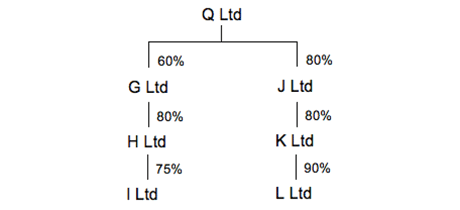Part 1 of 4
This is the Finance Act 2021 version of this article. It is relevant for candidates sitting the ATX-UK exam in the period 1 June 2022 to 31 March 2023. Candidates sitting ATX-UK after 31 March 2023 should refer to the Finance Act 2022 version of this article (to be published on the ACCA website in 2023).
Groups of companies are an important aspect of corporation tax within ATX-UK. Having studied the basics of this area at TX-UK you are now expected to progress to more advanced aspects. However, the basic rules continue to be of vital importance as they are the foundation on which the additional rules rest. You must have a sound knowledge of the many rules within this subject if you are to be able to handle an exam question involving groups.
This is not an introductory article: it is relevant to students coming to the end of their studies and finalising their preparations to sit the exam. It begins by briefly summarising the rules relating to both group relief groups and capital gains groups. It then goes on to consider various issues relating to capital gains groups that could be introduced in an exam question. It does not include comprehensive explanations of the rules but assumes a reasonable knowledge.
This article is intended to be read proactively, ie statements made should be confirmed as true by reference to the reader’s understanding of the rules or to a relevant study text. This approach will enable future situations to be analysed from first principles rather than by reference to a rigid set of memorised planning points
The basic rules
The structure of the Q Ltd group of companies is set out in Figure 1. It should be assumed that all of the companies are resident in the UK. The minority shareholders in the group companies are companies with no relationship with Q Ltd.
You should be able to review the group structure and confidently identify the members of any group relief groups and capital gains groups; do this before you read the information in Table 1.
Figure 1: Structure of the Q Ltd group of companies

Table 1: Group relief and capital gains groups re Figure 1
Group relief group | Capital gains group |
|
|---|---|---|
| The groups | There are five separate group relief groups. • G Ltd and H Ltd | • Q Ltd, J Ltd, K Ltd and L Ltd form a capital gains group. • G Ltd, H Ltd and I Ltd form a separate capital gains group. |
| Rationale | There is no group of more than two companies because, excluding immediate subsidiaries, no company has an effective interest of at least 75% in any other company. | • The effective interest of a principal company in a non-directly held subsidiary needs only to be more than 50%. • Q Ltd is not in a group with G Ltd because it does not have a direct 75% interest in G Ltd. |
Once a capital gains group exists:
- Any transfers of chargeable assets between group companies take place at no gain, no loss. This is automatic and no election is required.
- An election can be made to transfer the whole or part of a chargeable gain or allowable capital loss of the current accounting period from one group company to another.
- All of the companies in the group are treated as a single company for the purposes of rollover relief.
- In addition, the transfer of intangible fixed assets does not give rise to a tax charge. Instead, the transferee company is treated as having purchased the asset on the day it was acquired by the transferor company at the same cost. This is automatic and no election is required.
Companies resident overseas
Companies resident overseas are included within a capital gains group. However, the advantages available to such groups are restricted to companies resident in the UK or companies resident overseas which have a permanent establishment in the UK. If K Ltd in the Q Ltd group were owned by J Co, a company resident and trading outside the UK, rather than J Ltd, the members of the Q Ltd capital gains group would not change. However, no gain, no loss transfers, and the other advantages of capital gains groups, would only be available between Q Ltd, K Ltd and L Ltd (and between G Ltd, H Ltd and I Ltd as before).
Conclusion
It is vital to be able to identify the members of a group relief group and a capital gains group. It is then necessary to consider the planning opportunities available to the companies concerned. These opportunities are considered in the remaining parts of this article.
Note: Corporation tax issues are considered in two further articles:
- Corporation tax for ATX-UK
- Corporation tax – Group relief for ATX-UK
Written by a member of the ATX-UK examining team
The comments in this article do not amount to advice on a particular matter and should not be taken as such. No reliance should be placed on the content of this article as the basis of any decision. The authors and the ACCA expressly disclaim all liability to any person in respect of any indirect, incidental, consequential or other damages relating to the use of this article.


